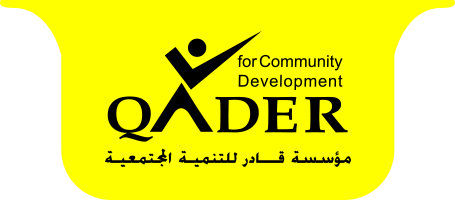Youth Empowerment and Leadership Project

Background:
"Youth Empowerment and Leadership Project" was designed and implemented as a response to the reality of disability movement in Palestine. The project was to complement the efforts made in various aspects including human rights and other issues related to persons with disabilities. As well, it represented the philosophy adopted by QADER which is based on the human rights based approach in its work with persons with disabilities. The project was implemented in partnership with The Italian Association for Solidarity Among People (AISPO), and funded by the the Italian Ministry of Foreign Affairs
Project objectives:
The project aimed at building a model of young men and women with disabilities who are trained, competent and has adequate capacity to enrich the disability movement in Palestine with youth with disabilities who can lead, contribute and participate in social planning for persons with disabilities in the Southern West Bank.
The project had the following objectives:
- Fostering positive attitudes among the participants towards themselves and help them to deal with the other members of society.
- Provide participants with knowledge and information required on the reality of persons with disabilities in Palestine.
- Building leadership capacity for participants and enabling them to implement advocacy campaigns for their causes and rights.
Target group:
Participants in the project were 14 young men and women with disabilities from Bethlehem and Hebron governorates. Disabilities of the participants are mainly sensory and mobility, and their ages are between 19 - 26 years old; most of them are university students, and the others
Target areas:
Southern West Bank: Bethlehem and Hebron Governorates.
Project activities and outputs:
- Training Component:
The training was an essential component of the project and was implemented over a period of seven whole months with a total of 120 training hours. The trainings comprised of several themes; as follow:
- The psycho-social aspects; which included trainings in stress management, anger, self-concept, self-awareness and psychodrama.
- Disability aspects; which tackled a number of issues and topics related to disability statistics in Palestine, concepts of disability, disabling conditions, laws and legislations, programs and services, rights of persons with disabilities, models of rehabilitation, and others.
- Leadership and skills aspects; which included communicating skills, critical and creative thinking, problem-solving skills, coordination and networking skills, planning and implementation of advocacy campaigns, and others.
- Cultural exchange visit:
The project included a cultural exchange visit for the participants to the Syrian Arab Republic for 8 days, where the trainees have visited various organizations there, participated in transferring and acquiring experiences with members of the organizations in Syria. In addition it included visits to a number of historical, religious and touristic sites in Syrian which had a positive impact on the participants. The training has been implemented with a group of young people from Syria, which in turn gave the opportunity for trainees to exchange experiences with other youth groups.
- Participants’ Initiatives and projects
The implementation of this component came at last; crowning all the efforts that haven made during the project. The participants worked, with the assistance and support from QADER, on two main join collaborative initiatives, which are:
- An initiative to amend the Palestinian law concerning Persons with Disabilities’ rights. They conducted different readings and in depth analysis of related laws both nationally and internationally. Accordingly, they developed proposal for the amendment of the Palestine disabled rights law No. 4 of 1999.
- They also launched an initiative and campaign to adapt the physical environment in Public Places in Bethlehem and Hebron cities. The objective of the campaign was support the rights of persons with disabilities in freedom of movement and in inclusive environment free of physical obstacles. The campaign was to adapt 50 locations in the city of Hebron, and another 50 in the city of Bethlehem.

